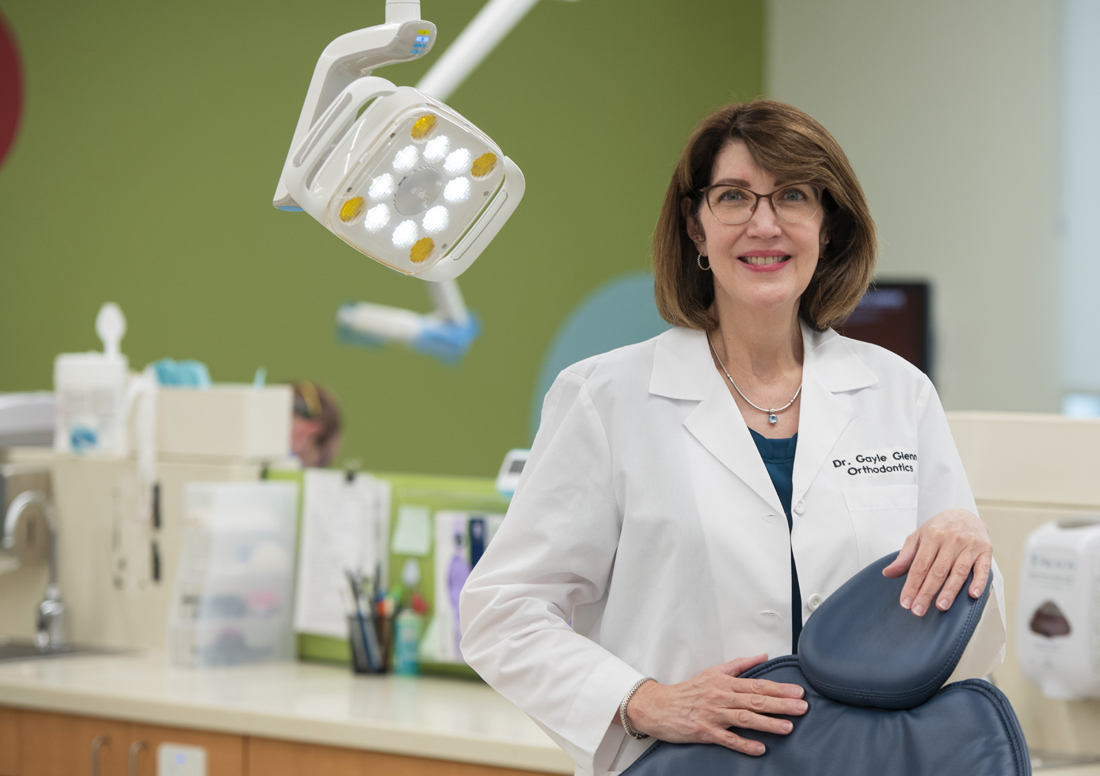Faculty member reps school and specialty on national commission

Dr. Gayle Glenn, clinical assistant professor and orthodontic clinic director, is the newly elected vice chair of the National Commission on Recognition of Dental Specialties and Certifying Boards. Her one-year term officially begins this October, followed by eligibility to be elected to the top chairperson seat, she explains.
“The commission is a joint project between the American Dental Association and the recognized dental specialties,” Glenn says. “The mission is to serve the public and the profession by providing transparent and objective review of the recognized specialty organizations, prospective specialty organizations, and their respective certifying boards.”
In short, it creates procedures to recognize dental specialties and grant or deny said recognition. Glenn first joined the commission as a representative in October 2020 for a four-year term.
“Dr. Glenn is a proven leader,” says Dr. Larry Tadlock, orthodontic program director and department head. “She was elected by the members of the commission because of how professional and committed she has been as a representative. Our department and the school are fortunate to have her.”
The commission was organized by the ADA in 2017 and held its first meeting in 2018, Glenn says. It comprises 25 commissioners: 12 ADA representatives, one member of the public, and one representative for each currently recognized dental specialty. Glenn is the representative for the specialty of orthodontics.
“The vice chair is kind of like a ‘chair-elect,’” she says. “Assuming I’ve done a good job, then I would stand for election to be chair from 2023 to 2024. It’s not an automatic thing, so that’s why it’s not called a ‘chair-elect.’”
Glenn’s leadership position will help expand Texas A&M College of Dentistry’s name recognition, she says. On a more personal note, she says the election was quite an honor and she hopes to handle her role well. What she is really looking forward to, Glenn says, is gaining a broader perspective on the commission standards that protect the public and improve quality of care.
“It is a large commission, so the commissioners are assigned to different committees and ad hoc groups,” she says. “I feel I have a good handle on the reports from groups I was working with, but until you get all the meeting information in preparation for the annual meeting, it’s hard to see how each individual cog fits into the wheel.”
“The nice thing about being vice chair is I’ll be privy to all the committee minutes and participate in meetings with all those different moving parts throughout the year. I think it will give me a better view of the big picture.”